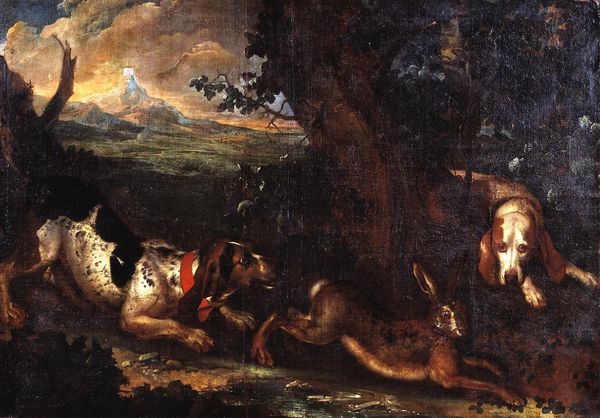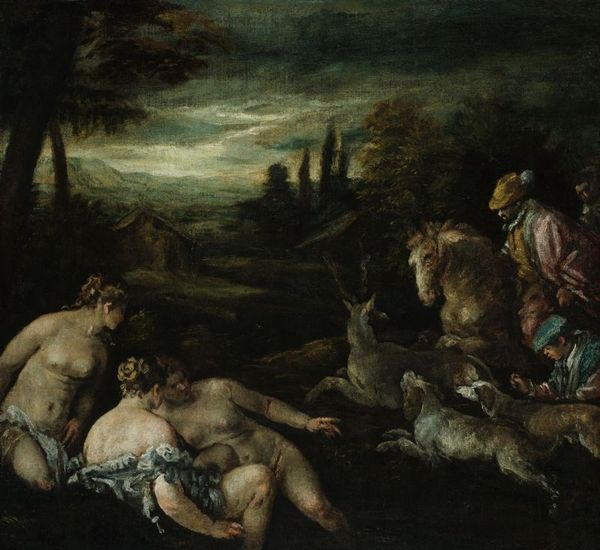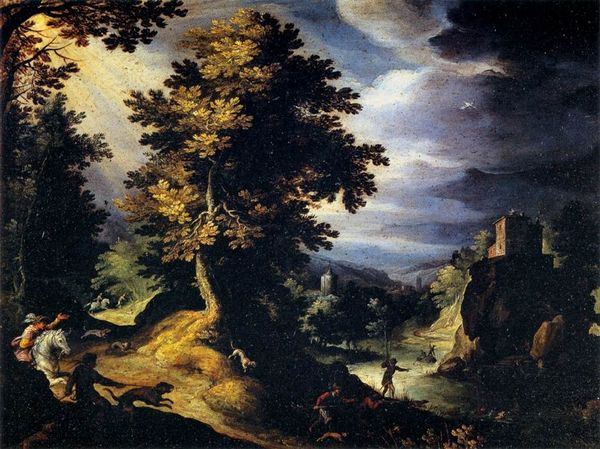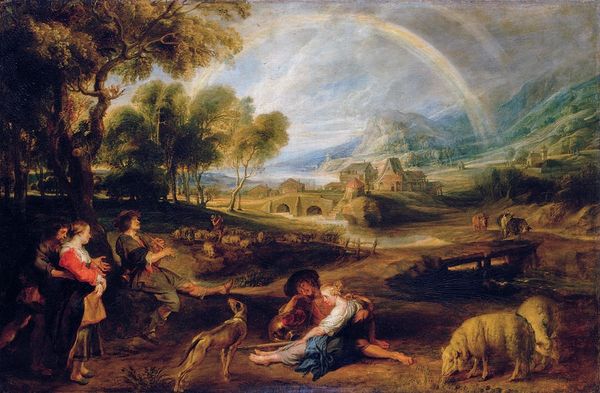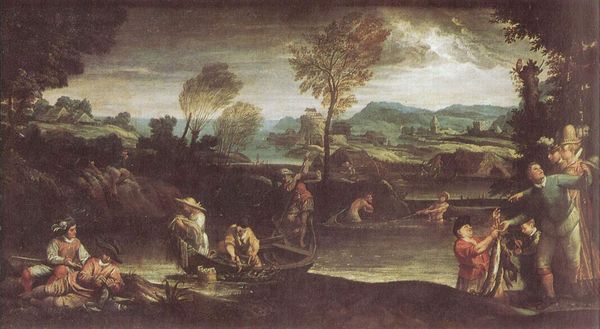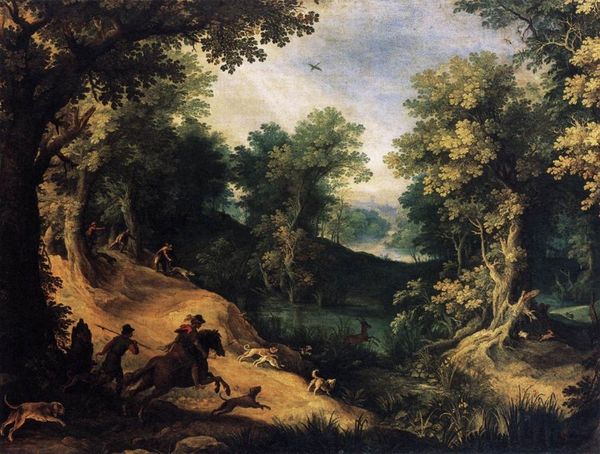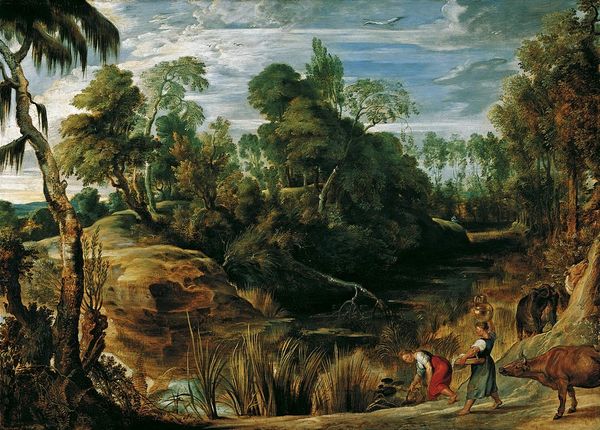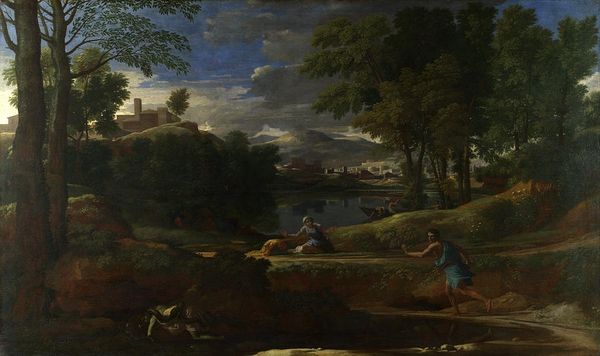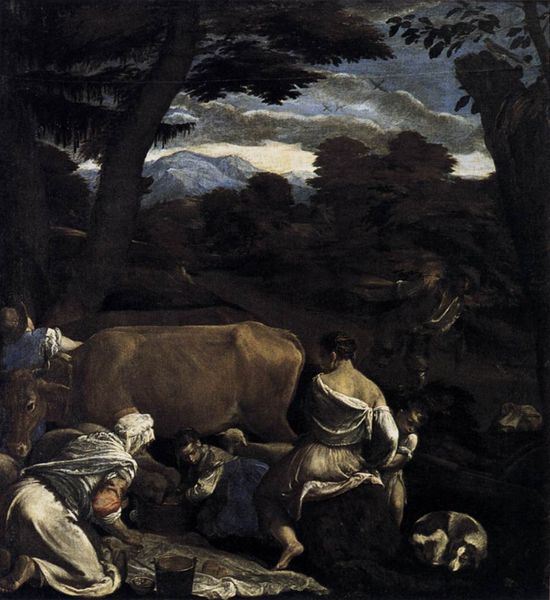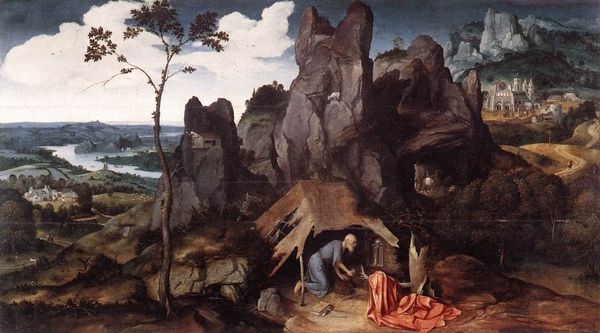
Dimensions: 136 x 253 cm
Copyright: Public domain
Editor: Annibale Carracci’s "Hunting," created in 1588 using oil paint, currently resides in the Louvre. What strikes me is the contrast between the active hunt and the stillness of the landscape. How do you interpret this work? Curator: Notice how the very act of "hunting" itself carries layers of symbolic meaning beyond the literal depiction. Think about the social status often associated with hunting in this era – a symbol of power, virility, and control over the natural world. This potent imagery is deployed by many painters throughout the centuries, tapping into an essential, shared cultural narrative. Editor: So it's not just about the hunt itself, but what the hunt represents? Curator: Precisely. Consider, too, the forest as a liminal space – a place of testing and transformation found in mythologies and folklore across cultures. How does Carracci use light and shadow to create a feeling of both excitement and unease within that space? Editor: I see it now! The deep shadows and fleeting light definitely play on that sense of uncertainty and adventure within the woods. Almost like a stage! Curator: It *is* like a stage! And do you see the echoes of classical pastoral scenes in this so-called hunt? Editor: Oh, yes! I hadn’t considered that, but the figures, despite being engaged in hunting, also possess a kind of idealized, classical quality, particularly in their poses. Thanks! It gives so much to consider regarding class and landscape painting! Curator: It does. And perhaps by understanding the potency of the symbols he employs, we are brought into a new connection with the work and also with this cultural inheritance.
Comments
No comments
Be the first to comment and join the conversation on the ultimate creative platform.



